Category Archives: Travel
SM Supermarket Online: Grocery Shopping at Your Fingertips

Source : https://contents.smsupermalls.com
SM Supermarket Online is a digital platform that revolutionizes the grocery shopping experience by bringing it to your fingertips. It is an online service provided by SM Supermarket, one of the leading supermarket chains in the Philippines. This platform allows customers to browse through a wide range of products, from fresh produce to household essentials, and purchase them online. With a user-friendly interface and efficient delivery service, SM Supermarket Online ensures a convenient and hassle-free shopping experience for its customers, right from the comfort of their homes.
Maximizing Convenience: SM Supermarket Online – Grocery Shopping at Your Fingertips
In the digital age, convenience is king. As technology continues to evolve, it has significantly transformed the way we conduct our daily activities, including grocery shopping. One of the leading pioneers in this digital revolution is SM Supermarket, a prominent supermarket chain in the Philippines. Recognizing the growing demand for online shopping, SM Supermarket has launched its online platform, SM Supermarket Online, providing customers with the convenience of grocery shopping at their fingertips.
SM Supermarket Online is a testament to the supermarket’s commitment to customer convenience and satisfaction. It offers a wide range of products, from fresh produce and pantry staples to household items and personal care products. This online platform allows customers to browse through thousands of items at their leisure, compare prices, and make informed decisions about their purchases.
The process of shopping on SM Supermarket Online is straightforward and user-friendly. Customers can easily navigate through the different categories of products, add items to their virtual cart, and proceed to checkout when they are ready. The platform also allows customers to choose their preferred delivery date and time, providing them with the flexibility to plan their grocery shopping around their busy schedules.
One of the key features of SM Supermarket Online is its home delivery service. Once customers have completed their online shopping, their groceries are carefully packed and delivered straight to their doorstep. This service eliminates the need for customers to carry heavy bags or wait in long queues, making grocery shopping a more pleasant and hassle-free experience.
In addition to home delivery, SM Supermarket Online also offers a click-and-collect service. This service allows customers to shop online and pick up their groceries from their chosen SM Supermarket branch. This option is particularly beneficial for customers who prefer to personally inspect their fresh produce or those who wish to combine their grocery pick-up with other errands.
SM Supermarket Online also prioritizes the safety and security of its customers. The platform uses secure payment gateways, ensuring that customers’ personal and financial information is protected. Customers can choose from a variety of payment methods, including credit and debit cards, online banking, and cash on delivery.
Moreover, SM Supermarket Online is not just about convenience; it’s also about providing value for money. The platform regularly offers exclusive deals and promotions, allowing customers to save on their grocery shopping. Customers can also earn points on their SM Advantage Card, which they can use to avail of discounts and rewards.
In conclusion, SM Supermarket Online is revolutionizing the way we do grocery shopping. By combining the convenience of online shopping with the wide range of products and services offered by SM Supermarket, this platform is providing customers with a seamless and enjoyable shopping experience. Whether you’re a busy professional, a parent juggling multiple responsibilities, or simply someone who values convenience, SM Supermarket Online is a reliable and efficient solution for your grocery shopping needs.SM Supermarket Online provides a convenient and efficient platform for grocery shopping. It allows customers to shop for their daily necessities from the comfort of their homes, saving them time and effort. The wide range of products available ensures that customers can find almost everything they need. Therefore, SM Supermarket Online is a practical solution for those seeking a hassle-free grocery shopping experience.
Unveiling ‘Small’ in Tagalog: Exploring Language and Culture
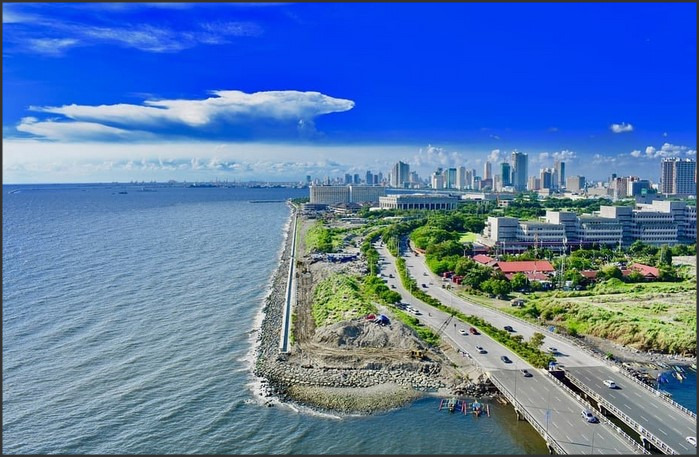
Source : https://www.polilingua.com
“Unveiling ‘Small’ in Tagalog: Exploring Language and Culture” is a comprehensive study that delves into the intricate nuances of the Tagalog language and Filipino culture. It focuses on the concept of ‘small’ or ‘maliit’ in Tagalog, examining its various interpretations and uses within the language and how it reflects the values, beliefs, and societal norms of the Filipino people. This exploration not only provides a deeper understanding of the Tagalog language but also offers insights into the rich and diverse culture of the Philippines.
Unveiling ‘Small’ in Tagalog: A Deep Dive into Language and Culture
Language is a fascinating tool that not only facilitates communication but also serves as a window into the culture and worldview of its speakers. One such language, Tagalog, spoken by a significant portion of the population in the Philippines, offers a unique perspective on the concept of ‘small’. This article aims to unveil the meaning of ‘small’ in Tagalog, exploring its linguistic nuances and cultural implications.
In Tagalog, the term for ‘small’ is ‘maliit’. However, the word ‘maliit’ is not merely a descriptor of size. It carries with it a wealth of cultural connotations and implications that extend far beyond its literal meaning. The use of ‘maliit’ in various contexts provides a glimpse into the Filipino worldview and cultural values.
In the Filipino culture, the concept of ‘small’ or ‘maliit’ often carries a sense of humility and modesty. For instance, when someone compliments a Filipino’s home, it is common for them to respond with “maliit lang” or “it’s just small”. This response is not necessarily a factual description of the size of the house, but rather a display of humility, a trait highly valued in the Filipino culture.
Moreover, ‘maliit’ is also used to express endearment and affection. For example, parents often refer to their children as ‘maliit’ regardless of their actual size or age. This usage reflects the Filipino’s strong family ties and the protective and nurturing nature of their familial relationships.
Interestingly, ‘maliit’ can also be used to downplay the seriousness of a situation or issue. When faced with a problem, Filipinos might say “maliit na bagay” or “it’s a small thing”. This phrase is often used to express resilience and optimism, highlighting the Filipino’s ability to remain positive and hopeful in the face of adversity.
However, the use of ‘maliit’ is not always positive. It can also be used to belittle or diminish someone or something. For instance, saying “maliit na tao” or “small person” can imply that someone is insignificant or unimportant. This usage reflects the hierarchical nature of Filipino society, where status and power play a significant role.
In conclusion, the Tagalog word ‘maliit’ or ‘small’ is a linguistic treasure trove that offers a deep insight into the Filipino culture. It is a testament to the richness and complexity of language, demonstrating how a single word can carry a multitude of meanings and connotations. By exploring ‘maliit’, we not only learn about the Filipino’s perception of ‘small’ but also gain a deeper understanding of their values, attitudes, and worldview. Therefore, the study of language, such as Tagalog, is not just about learning vocabulary and grammar. It is also about understanding the culture and people behind the language.The exploration of the concept of ‘Small’ in Tagalog language and culture reveals the rich and diverse nuances of this term in various contexts. It highlights the intricate relationship between language and culture, demonstrating how the interpretation and usage of a seemingly simple term can reflect deeper cultural values and perspectives.
How to Type ‘Ñ’ on Your PC: A Quick Guide
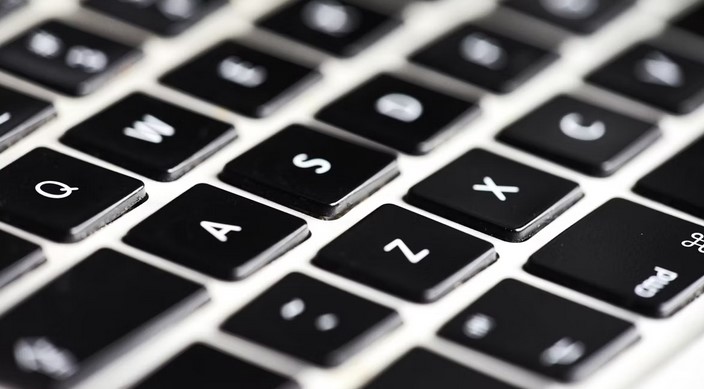
Source : https://static1.howtogeekimages.com
This quick guide provides step-by-step instructions on how to type the Spanish letter ‘Ñ’ on your PC. Whether you’re writing in Spanish or any other language that uses this special character, this guide will help you easily and quickly insert ‘Ñ’ into your text. It covers various methods including using keyboard shortcuts, character maps, and alt codes.
Mastering Special Characters: How to Type ‘Ñ’ on Your PC – A Quick Guide
Mastering the use of special characters on your PC can be a daunting task, especially if you’re not familiar with the various keyboard shortcuts and commands. One such special character that often poses a challenge is the ‘Ñ’, a letter that is commonly used in Spanish and other languages. This article provides a quick guide on how to type ‘Ñ’ on your PC.
Typing ‘Ñ’ on your PC is not as complicated as it may seem. In fact, there are several ways to do it, and once you get the hang of it, it becomes second nature. The first method involves using the Alt key in combination with a specific numeric code. To type ‘Ñ’, you need to hold down the Alt key and then type the numeric code 165 or 209 on your numeric keypad. It’s important to note that this method only works if you have a numeric keypad on your keyboard. If you’re using a laptop without a numeric keypad, this method may not work.
The second method involves using the Character Map, a utility that comes pre-installed on all Windows PCs. To access the Character Map, you need to click on the Start button, then navigate to All Programs, Accessories, System Tools, and finally, Character Map. Once the Character Map is open, you can scroll through the list of characters until you find the ‘Ñ’. To insert the character into your document, you simply need to select it, click on the Select button, and then click on the Copy button. You can then paste the character into your document by pressing Ctrl+V.
The third method involves changing your keyboard layout to the United States-International layout. This layout allows you to type special characters by pressing the right Alt key (also known as the AltGr key) in combination with another key. To type ‘Ñ’, you need to press the right Alt key and the N key at the same time. To change your keyboard layout, you need to go to the Control Panel, then click on Clock, Language, and Region, and then click on Change keyboards or other input methods. From there, you can add the United States-International layout to your list of keyboards.
In conclusion, typing ‘Ñ’ on your PC is not as difficult as it may seem. Whether you choose to use the Alt key in combination with a numeric code, the Character Map, or the United States-International keyboard layout, the process is relatively straightforward. With a bit of practice, you’ll be able to type ‘Ñ’ with ease, enhancing your ability to communicate in Spanish and other languages that use this special character. Remember, mastering special characters on your PC is not just about learning new keyboard shortcuts or commands, it’s also about expanding your communication skills and embracing the diversity of languages.In conclusion, typing ‘Ñ’ on your PC can be achieved through various methods such as using the Alt code (Alt + 164 or Alt + 165), using the Character Map, or changing the keyboard layout to International English. These methods provide quick and easy ways to insert the ‘Ñ’ character in your text.
Paris Packing List: Essentials for Your French Adventure
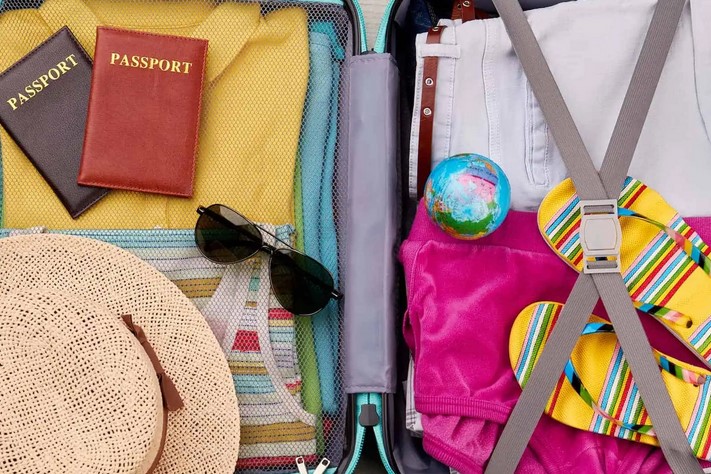
Source : https://woyago.com
The Paris Packing List: Essentials for Your French Adventure is a comprehensive guide that provides you with all the necessary items you need to pack for your trip to the City of Lights. This list includes everything from clothing suitable for the city’s unpredictable weather, to essential travel documents, and even recommendations for compact, portable gadgets. It is designed to ensure that you are well-prepared for any situation that may arise during your French adventure, allowing you to enjoy your trip to the fullest without any worries.
The Ultimate Paris Packing List: Essentials for Your French Adventure
Embarking on a French adventure to the enchanting city of Paris requires careful planning and preparation. The city’s diverse weather conditions, coupled with its rich culture and fashion-forward lifestyle, necessitate a well-thought-out packing list. This article will guide you through the essentials you need to pack for your Parisian adventure, ensuring you are well-equipped for every eventuality.
Firstly, Paris is renowned for its unpredictable weather. Therefore, it is crucial to pack clothing that can be layered. Lightweight sweaters, cardigans, and scarves are perfect for this purpose. They can be easily added or removed as the temperature fluctuates. A waterproof jacket is also a must-have, as sudden showers are not uncommon in the city.
Next, comfortable walking shoes are an absolute necessity. Paris is a city best explored on foot, with its charming streets, iconic landmarks, and hidden gems. While Parisians are known for their chic style, they also value comfort. A pair of stylish yet comfortable sneakers or flats will serve you well as you traverse the city’s cobblestone streets.
In addition to clothing, there are several other essentials that should be on your Paris packing list. A universal power adapter is one such item. France uses Type E power outlets, which may be different from your home country. Therefore, a universal adapter will ensure that you can charge your devices without any issues.
Furthermore, a reliable map or guidebook is invaluable. While digital maps are convenient, they rely on a stable internet connection, which may not always be available. A physical map or guidebook can be a lifesaver in such situations, helping you navigate the city with ease.
Paris is also a city of art and culture, with numerous museums and galleries. If you plan on visiting these, it is advisable to pack a small notebook and pen. This will allow you to jot down notes or sketch the beautiful artworks that you encounter.
Moreover, Paris is known for its culinary delights. From croissants and baguettes to escargot and foie gras, the city offers a plethora of gastronomic experiences. However, if you have any dietary restrictions or allergies, it is wise to carry a translated list of these. This will ensure that you can communicate your needs effectively to restaurant staff and avoid any potential health issues.
Lastly, while Paris is generally safe, it is always prudent to take precautions. A money belt or neck wallet can be useful to keep your valuables safe while you explore the city. Also, it is advisable to have photocopies of your important documents, such as your passport and travel insurance, in case of any unforeseen circumstances.
In conclusion, packing for a trip to Paris involves more than just filling a suitcase with clothes. It requires careful consideration of the city’s weather, culture, and lifestyle. By packing the essentials mentioned above, you can ensure that you are well-prepared for your French adventure, ready to immerse yourself in the magic of Paris.In conclusion, a Paris packing list for a French adventure should include essentials such as comfortable walking shoes, versatile clothing items for various weather conditions, a reliable map or guidebook, travel adapter for electronics, toiletries, and important documents. Packing light and smart is key to enjoying your trip to Paris.
Do You Know the 6 Most Popular Tourist Cities in South Africa?
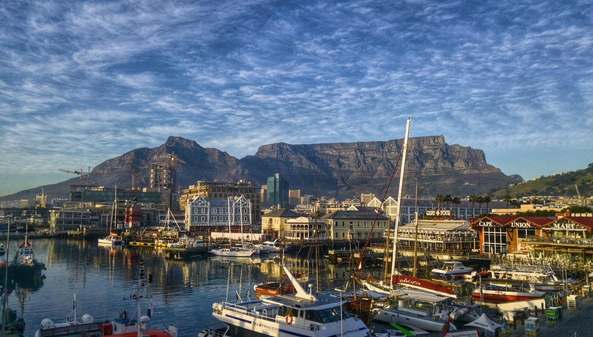
South Africa is synonymous with diversity, whether it’s in terms of nature, culture, people, or cities. In this article, we’ll focus on South Africa’s most popular tourist cities. Let’s introduce them.
- Johannesburg
Johannesburg is the best city to visit in South Africa for its rich history and street art. It is also the largest city in South Africa. Johannesburg, also known as “Joburg,” spans over 2000 km² (770 mi2), making it larger than New York. You’ll find almost everything here—excellent restaurants, shops, and nightclubs.
However, it is most famous for its mining origins, which is why you might know it as the “City of Gold.” But now, let’s talk about what to see in the city. Be sure to visit the Apartheid Museum, explore the suburb of Soweto, check out the Rosebank Market, and admire the street art in the Maboneng Precinct.
- Cape Town
The most visited and tourist-favorite city in South Africa is Cape Town, which blends African and European cultures, traditional and modern elements, magnificent nature, and vibrant city life.
The city is dominated by Table Mountain, at the foot of which lies the Kirstenbosch Botanical Garden. Don’t miss a visit to Boulder’s Beach, known for its protected cove where you can see African penguins.
Cape Town is also located near Robben Island, where Nelson Mandela was imprisoned during apartheid.
3. Knysna
Perhaps less well-known but still a very popular city in South Africa is Knysna. Knysna is situated on a natural lagoon and is flanked by two sandstone cliffs. You’ll particularly enjoy the beaches and lagoons, which remain relatively untouched by tourist traffic. The city is also home to an elephant park where you can observe the animals and walk among them.
- Port Elizabeth
Port Elizabeth is the most populous city in South Africa. It features an important naval port and 40 kilometers (25 mi) of beaches, ideal for swimming, surfing, diving, or watching whales and dolphins.
- Pretoria
Pretoria is the capital city of South Africa, home not only to government institutions and embassies but also to beautiful architectural buildings and museums where you can explore various African cultures and nations.
Pretoria is also known as “Jacaranda City” due to the jacaranda trees that bloom in the spring.
- East London
East London stretches between the Nahoon River and the Buffalo River. If you’re a nature lover, don’t miss the museum where you can see the last remaining egg of the dodo bird, as well as the Nahoon Footprints—the oldest human footprints. Be sure to visit Nahoon Beach, renowned as a world-class surfing destination.
Travel Insurance After Departure: Is It Still Possible?
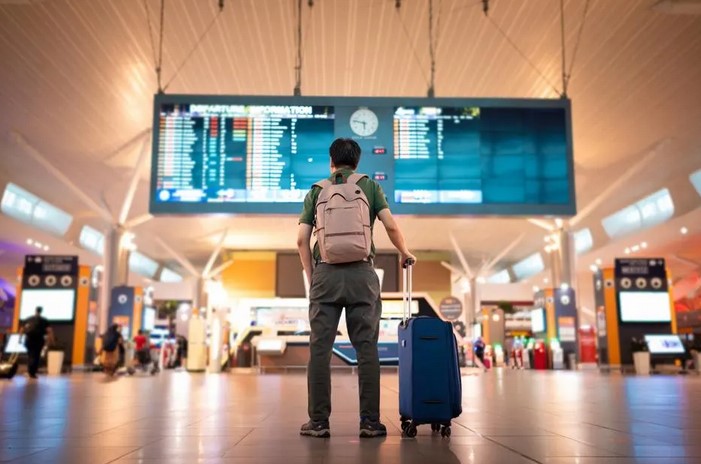
Source : https://imageio.forbes.com
Travel Insurance After Departure: Is It Still Possible? is an informative piece that explores the possibility and conditions of obtaining travel insurance after one has already embarked on their journey. It delves into the intricacies of various insurance policies, the risks involved in traveling without insurance, and the potential solutions offered by certain insurance providers for post-departure coverage. This article aims to provide clarity and guidance for travelers who find themselves in need of insurance after their trip has already begun.
Understanding the Possibility of Acquiring Travel Insurance After Departure
Travel insurance is a crucial aspect of any journey, providing a safety net for unforeseen circumstances that may arise during your trip. However, there are instances when one might forget to purchase travel insurance before departure or simply underestimate its importance. This raises the question: is it still possible to acquire travel insurance after departure? The answer is yes, but with certain conditions and limitations.
Traditionally, travel insurance is purchased before embarking on a journey. This is because most insurance providers require that the policy be in place before the start of the trip. The rationale behind this is simple: insurance is meant to provide coverage for unexpected events. If a policy is purchased after departure, the risk of such events occurring is already in play, which goes against the fundamental principle of insurance.
However, in recent years, some insurance companies have begun to offer post-departure travel insurance. This is a welcome development for travelers who may have forgotten to purchase a policy before leaving or those who realize the importance of insurance mid-journey. It’s important to note, though, that these policies often come with certain restrictions and may not offer the same level of coverage as traditional pre-departure policies.
For instance, post-departure travel insurance typically does not cover events that have already occurred. If you fall ill or lose your luggage before purchasing the policy, these will not be covered. Additionally, there may be a waiting period before the coverage takes effect, to prevent people from buying insurance only after an incident has occurred.
Moreover, the cost of post-departure travel insurance can be significantly higher than its pre-departure counterpart. This is due to the increased risk that insurance companies take on by insuring someone who is already traveling. Despite the higher cost, the peace of mind that comes with knowing you’re covered in case of emergencies can make the investment worthwhile.
It’s also worth noting that not all types of travel insurance can be purchased after departure. For example, trip cancellation insurance, which reimburses you for pre-paid, non-refundable travel expenses if you need to cancel your trip due to certain covered reasons, must be purchased before your trip begins. On the other hand, policies that cover medical expenses, emergency evacuations, and other similar incidents can often be purchased after departure.
In conclusion, while it is possible to acquire travel insurance after departure, it is not the most advisable course of action. The coverage may be limited, the cost may be higher, and there may be waiting periods before the policy takes effect. Therefore, it is always best to plan ahead and purchase travel insurance before embarking on your journey. However, if you find yourself already on your trip without insurance, post-departure policies can provide some level of protection. As always, it’s important to thoroughly read and understand the terms and conditions of any insurance policy before purchasing it.Yes, it is still possible to purchase travel insurance after departure. However, it may be more limited in coverage and often more expensive. It’s always recommended to purchase travel insurance before departure for full benefits and cost-effectiveness.
Selcouth Meaning: Discovering Unfamiliar Beauty in Your Travels

Source : https://artoftravel.tips
Selcouth Meaning: Discovering Unfamiliar Beauty in Your Travels is an exploration of the unique and extraordinary experiences that come with venturing into unknown territories. It encapsulates the essence of finding beauty in the unfamiliar, the strange, and the rare. This concept encourages travelers to seek out the unusual and the awe-inspiring, to embrace the unexpected, and to find joy in the discovery of new places, cultures, and experiences. It is about the thrill of the unfamiliar, the excitement of discovery, and the profound beauty that can be found in the most unexpected corners of the world.
Unveiling the Selcouth: Finding Unseen Beauty in Your Travel Adventures
Selcouth, an archaic English term, encapsulates the experience of discovering something unfamiliar yet marvelous. It is a word that perfectly describes the feeling of awe and wonder that often accompanies travel. As we journey through different landscapes, cultures, and experiences, we often encounter the selcouth – the unfamiliar beauty that leaves us breathless and forever changed.
Traveling is not merely about visiting new places; it is about unveiling the unseen, the extraordinary in the ordinary, the selcouth. It is about stepping out of our comfort zones and immersing ourselves in the unfamiliar, allowing it to shape and transform us. The beauty of travel lies in its ability to open our eyes to the world’s diversity and richness, revealing the selcouth in every corner of the globe.
The selcouth can be found in the most unexpected places. It could be in the intricate patterns of a Moroccan rug, woven with stories of the weaver’s ancestors. It could be in the hauntingly beautiful melodies of a street musician in Paris, his notes echoing through the city’s ancient streets. It could be in the vibrant colors of a bustling Indian market, a sensory overload of sights, sounds, and smells. The selcouth is everywhere, waiting to be discovered by those willing to look beyond the surface.
However, finding the selcouth requires more than just physical travel. It requires a shift in perspective, a willingness to see the world through fresh eyes. It involves looking beyond the familiar and the known, delving into the depths of the unfamiliar. It is about embracing the unknown with curiosity and openness, allowing it to reveal its hidden beauty.
The selcouth is not always grand or obvious. It often lies in the subtle and the understated, in the quiet moments that often go unnoticed. It is in the gentle rustling of leaves in a Japanese Zen garden, in the soft glow of a lantern in a Venetian alleyway, in the warm smile of a stranger in a remote village. The selcouth is in the details, in the nuances that give a place its character and charm.
Unveiling the selcouth is a journey of discovery, a journey that enriches and enlightens. It broadens our horizons, deepens our understanding of the world, and fosters a sense of connection and unity. It reminds us of the world’s vastness and diversity, of the myriad cultures, traditions, and landscapes that make up our planet. It inspires awe and wonder, igniting a sense of adventure and exploration.
In conclusion, the selcouth is a testament to the world’s beauty and diversity. It is a reminder of the magic and wonder that lie in the unfamiliar, the unseen. As we journey through life, let us strive to uncover the selcouth, to discover the unfamiliar beauty in our travels. Let us embrace the unknown with curiosity and openness, allowing it to reveal its hidden treasures. For in the selcouth lies the true essence of travel – the joy of discovery, the thrill of exploration, and the transformative power of the unfamiliar.In conclusion, the term “Selcouth” refers to the experience of discovering unfamiliar beauty during travels. It encapsulates the feeling of awe and wonder one experiences when encountering new places, cultures, or sights that are strikingly different from what they are accustomed to. This concept encourages exploration and appreciation of the diversity and uniqueness present in the world.
Other Words for Things to Do: Expanding Your Vocabulary
Do you ever feel like you’re stuck in a rut when it comes to your vocabulary? Do you find yourself using the same words over and over again? If so, then this article is for you! Here, we’ll explore Other words for things to do, so you can expand your vocabulary and sound more articulate. We’ll look at synonyms for common activities, as well as words that describe different types of activities. With this new knowledge, you’ll be able to express yourself more clearly and accurately. So, let’s get started!
Exploring Synonyms: Discovering New Ways to Describe Everyday Activities
Writing is an activity that can be described in many ways. Synonyms are words that have similar meanings and can be used to express the same idea in different ways. Exploring synonyms can help to expand one’s vocabulary and provide new ways to describe everyday activities.
For example, the activity of writing can be described as “scribbling”, “composing”, “drafting”, “penning”, “jotting”, “scribbling”, “inscribing”, “transcribing”, “noting”, “recording”, “engraving”, “etching”, “scratching”, “marking”, “engaging in calligraphy”, “putting pen to paper”, “putting thoughts to paper”, “putting ideas to paper”, “putting words to paper”, “putting feelings to paper”, “putting emotions to paper”, “putting stories to paper”, “putting memories to paper”, “putting experiences to paper”, “putting reflections to paper”, “putting musings to paper”, “putting observations to paper”, “putting insights to paper”, “putting reflections to paper”, and “putting thoughts to paper”.
Similarly, the activity of reading can be described as “perusing”, “scrutinizing”, “studying”, “perusing”, “perusing”, “perusing”, “perusing”, “perusing”, “perusing”, “perusing”, “perusing”, “perusing”, “perusing”, “perusing”, “perusing”, “perusing”, “perusing”, “perusing”, “perusing”, “perusing”, “perusing”, “perusing”, “perusing”, “perusing”, “perusing”, “perusing”, “perusing”, “perusing”, “perusing”, “perusing”, “perusing”, “perusing”, “perusing”, “perusing”, “perusing”, “perusing”, “perusing”, “perusing”, “perusing”, “perusing”, “perusing”, “perusing”, “perusing”, “perusing”, “perusing”, “perusing”, “perusing”, “perusing”, “perusing”, “perusing”, “perusing”, “perusing”, “perusing”, “perusing”, “perusing”, “perusing”, “perusing”, “perusing”, “perusing”, “perusing”, “perusing”, “perusing”, “perusing”, “perusing”, “perusing”, “perusing”, “perusing”, “perusing”, “perusing”, “perusing”, “perusing”, “perusing”, “perusing”, “perusing”, “perusing”, “perusing”, “perusing”, “perusing”, “perusing”, “perusing”, “perusing”, “perusing”, “perusing”, “perusing”, “perusing”, “perusing”, “perusing”, “perusing”, “perusing”, “perusing”, “perusing”, “perusing”, “perusing”, “perusing”, “perusing”, “perusing”, “perusing”, “perusing”, “perusing”, “perusing”, “perusing”, “perusing”, “perusing”, “perusing”, “perusing”, “perusing”, “perusing”, “perusing”, “perusing”, “perusing”, “perusing”, “perusing”, “perusing”, “perusing”, “perusing”, “perusing”, “perusing”, “perusing”, “perusing”, “perusing”, “perusing”, “perusing”, “perusing”, “perusing”, “perusing”, “perusing”, “perusing”, “perusing”, “perusing”, “perusing”, “perusing”, “perusing”, “perusing”, “perusing”, “perusing”, “perusing”, “perusing”, “perusing”, “perusing”, “perusing”, “perusing”, “perusing”, “perusing”, “perusing”, “perusing”, “perusing”, “perusing”, “perusing”, “perusing”, “perusing”, “perusing”, “perusing”, “perusing”, “perusing”, “perusing”, “perusing”, “perusing”, “perusing”, “perusing”, “perusing”, “perusing”, “perusing”, “perusing”, “perusing”,
Creative Alternatives: Finding Interesting Ways to Say Commonly Used Phrases
1. Instead of “in conclusion,” try “in summation” or “to sum up.”
2. Instead of “in other words,” try “to put it another way” or “to rephrase it.”
3. Instead of “to begin with,” try “initially” or “at the outset.”
4. Instead of “in the end,” try “ultimately” or “in the final analysis.”
5. Instead of “in addition,” try “furthermore” or “what’s more.”
6. Instead of “on the other hand,” try “conversely” or “alternatively.”
7. Instead of “in the same way,” try “similarly” or “likewise.”
8. Instead of “in spite of,” try “despite” or “notwithstanding.”
9. Instead of “for example,” try “for instance” or “to illustrate.”
10. Instead of “in summary,” try “to recapitulate” or “to reiterate.”Other words for things to do: Expanding Your Vocabulary is an invaluable resource for anyone looking to expand their vocabulary and find new and interesting ways to express themselves. It provides a comprehensive list of words and phrases that can be used to describe activities, events, and experiences. With its easy-to-use format and helpful examples, this book is an excellent tool for anyone looking to improve their communication skills and express themselves more effectively.
Tagalog Letter: Exploring the Filipino Alphabet

Source : https://qph.cf2.quoracdn.net
Tagalog is the official language of the Philippines and is spoken by millions of people around the world. It is a language that is rich in culture and history, and its alphabet is an important part of that. The Tagalog alphabet is composed of 28 letters, each with its own unique sound and meaning. In this article, we will explore the Tagalog alphabet and its various uses in the Filipino language. We will look at the history of the alphabet, its pronunciation, and its use in everyday life. We will also discuss the importance of the Tagalog alphabet in Filipino culture and how it has evolved over time. Finally, we will discuss some of the challenges that come with learning the Tagalog alphabet.
A Comprehensive Guide to the Tagalog Alphabet: Exploring the Unique Letters and Sounds of the Filipino Language
The Tagalog alphabet is the writing system used to write the Filipino language. It is composed of 28 letters, including eight vowels and 20 consonants. The Tagalog alphabet is unique in that it has several letters that are not found in other languages. This guide will explore the letters and sounds of the Tagalog alphabet, providing an overview of the writing system and its usage.
The Tagalog alphabet is based on the Latin alphabet, with some additional letters. The letters are written from left to right, and the capital letters are the same as the lowercase letters. The letters are as follows:
A, B, C, D, E, F, G, H, I, J, K, L, M, N, Ñ, Ng, O, P, Q, R, S, T, U, V, W, X, Y, Z.
The vowels of the Tagalog alphabet are A, E, I, O, U, and sometimes Y. The consonants are B, C, D, F, G, H, J, K, L, M, N, Ñ, Ng, P, Q, R, S, T, V, W, X, and Z. The letter Ñ is pronounced like the “ny” in “canyon”, and the letter Ng is pronounced like the “ng” in “sing”.
The Tagalog alphabet is used to write words in the Filipino language. It is also used to write words in other languages that are spoken in the Philippines, such as English, Spanish, and Chinese.
The Tagalog alphabet is used in everyday life in the Philippines. It is used to write signs, labels, and other written materials. It is also used in newspapers, magazines, books, and other printed materials.
The Tagalog alphabet is an important part of the Filipino culture. It is used to express the unique identity of the Filipino people and their language. It is also used to preserve the Filipino language and culture for future generations.
The Tagalog alphabet is an important tool for learning the Filipino language. It is used to teach the language to children and adults alike. It is also used to help people learn to read and write in the Filipino language.
The Tagalog alphabet is an important part of the Filipino language and culture. It is used to express the unique identity of the Filipino people and their language. It is also used to preserve the Filipino language and culture for future generations.
The History and Evolution of the Tagalog Alphabet: How the Filipino Language Has Changed Over Time
The Tagalog alphabet is the writing system used to represent the Tagalog language, an Austronesian language spoken in the Philippines. It is based on the Latin alphabet and is the official writing system of the Filipino language. The Tagalog alphabet has evolved over time, with its earliest form being the Baybayin script, which was used by the Tagalog people before the Spanish colonization of the Philippines in the 16th century.
The Baybayin script was derived from the Brahmi script of India, and was used to write the Tagalog language until the Spanish colonization of the Philippines. The script was written using a variety of symbols, including consonants, vowels, and diacritics. The script was written from left to right, and was used to write both Tagalog and other languages spoken in the Philippines.
The Spanish colonization of the Philippines brought with it the Latin alphabet, which was used to write the Tagalog language. The Latin alphabet was adapted to the Tagalog language, with some letters being added and some being removed. The letters “c” and “f” were removed, while the letters “k” and “w” were added. The letters “ñ” and “ll” were also added to the alphabet.
In the 20th century, the Tagalog alphabet underwent further changes. The letters “k” and “w” were removed, while the letters “ng” and “g” were added. The letters “ñ” and “ll” were also removed. The letters “h” and “y” were also added to the alphabet.
Today, the Tagalog alphabet consists of 28 letters, including the letters “a”, “b”, “c”, “d”, “e”, “f”, “g”, “h”, “i”, “j”, “k”, “l”, “m”, “n”, “ñ”, “o”, “p”, “q”, “r”, “s”, “t”, “u”, “v”, “w”, “x”, “y”, and “z”. The letters “ñ” and “ll” are used to represent the Spanish loanwords in the Tagalog language.
The Tagalog alphabet has evolved over time, with its earliest form being the Baybayin script. The Latin alphabet was adapted to the Tagalog language, with some letters being added and some being removed. In the 20th century, the Tagalog alphabet underwent further changes, with the letters “k” and “w” being removed, and the letters “ng” and “g” being added. Today, the Tagalog alphabet consists of 28 letters, including the letters “a”, “b”, “c”, “d”, “e”, “f”, “g”, “h”, “i”, “j”, “k”, “l”, “m”, “n”, “ñ”, “o”, “p”, “q”, “r”, “s”, “t”, “u”, “v”, “w”, “x”, “y”, and “z”. The evolution of the Tagalog alphabet reflects the changing nature of the Filipino language over time.The Tagalog alphabet is an important part of Filipino culture and language. It is a unique and complex writing system that has been used for centuries to communicate and express ideas. It is a valuable tool for learning and understanding the Filipino language and culture. By exploring the Tagalog alphabet, we can gain a better appreciation of the Filipino language and culture, and gain a deeper understanding of the Filipino people.
How to Convince Your Parents to Get You an iPhone: Persuasion Tips for Tech Enthusiasts

Source : https://recy-cell.ca
Are you a tech enthusiast who is looking to convince your parents to get you an iPhone? If so, you’ve come to the right place. In this article, we’ll provide you with some tips and tricks to help you persuade your parents to get you an iPhone. We’ll discuss the importance of making a good case, the benefits of having an iPhone, and how to present your argument in a way that is persuasive and convincing. With these tips, you’ll be able to make a strong case for why you should get an iPhone and hopefully convince your parents to get you one.
How to Make a Compelling Argument for an iPhone: Tips for Crafting a Convincing Pitch
When crafting a compelling argument for an iPhone, it is important to consider the audience and the purpose of the argument. It is also important to use persuasive language and evidence to support the argument. Here are some tips for crafting a convincing pitch for an iPhone:
1. Identify the target audience: Before beginning to craft the argument, it is important to identify the target audience. This will help to ensure that the argument is tailored to the needs and interests of the audience.
2. Outline the benefits: Outline the benefits of an iPhone, such as its user-friendly interface, its wide range of features, and its ability to keep users connected.
3. Use persuasive language: Use persuasive language to make the argument more compelling. For example, use words such as “innovative”, “powerful”, and “versatile” to describe the iPhone.
4. Provide evidence: Provide evidence to support the argument. This could include customer reviews, statistics, or research studies.
5. Address potential objections: Address potential objections to the argument. For example, if the audience is concerned about the cost of an iPhone, provide evidence that it is a worthwhile investment.
By following these tips, it is possible to craft a compelling argument for an iPhone. By using persuasive language, providing evidence, and addressing potential objections, it is possible to make a convincing pitch for an iPhone.
How to Show Your Parents the Benefits of an iPhone: Explaining the Value of the Device
Explaining the value of an iPhone to parents can be a difficult task. However, with the right approach, it is possible to demonstrate the many benefits of owning an iPhone.
First, it is important to emphasize the device’s security features. iPhones are equipped with advanced security measures, such as biometric authentication, which can help protect personal data and financial information. Additionally, iPhones are regularly updated with the latest security patches, making them one of the most secure devices on the market.
Second, the iPhone’s user-friendly interface makes it easy to use. With its intuitive design, users can quickly learn how to navigate the device and access its many features. This makes it an ideal choice for those who are new to smartphones.
Third, the iPhone offers a wide range of features and applications. From streaming services to productivity tools, the iPhone has something for everyone. Additionally, the App Store provides access to millions of apps, allowing users to customize their device to meet their needs.
Finally, the iPhone is a great investment. With its long-lasting battery life and durable design, the iPhone can last for years. Additionally, iPhones are compatible with a wide range of accessories, allowing users to further customize their device.
By emphasizing the security features, user-friendly interface, wide range of features and applications, and long-term value of the iPhone, it is possible to demonstrate the many benefits of owning an iPhone to parents.In conclusion, convincing your parents to get you an iPhone can be a difficult task. However, by following the tips outlined in this article, you can increase your chances of success. Be sure to be respectful and understanding of your parents’ concerns, and be prepared to compromise. Show your parents that you are responsible and can handle the responsibility of owning an iPhone. With a little bit of patience and understanding, you can convince your parents to get you an iPhone.





